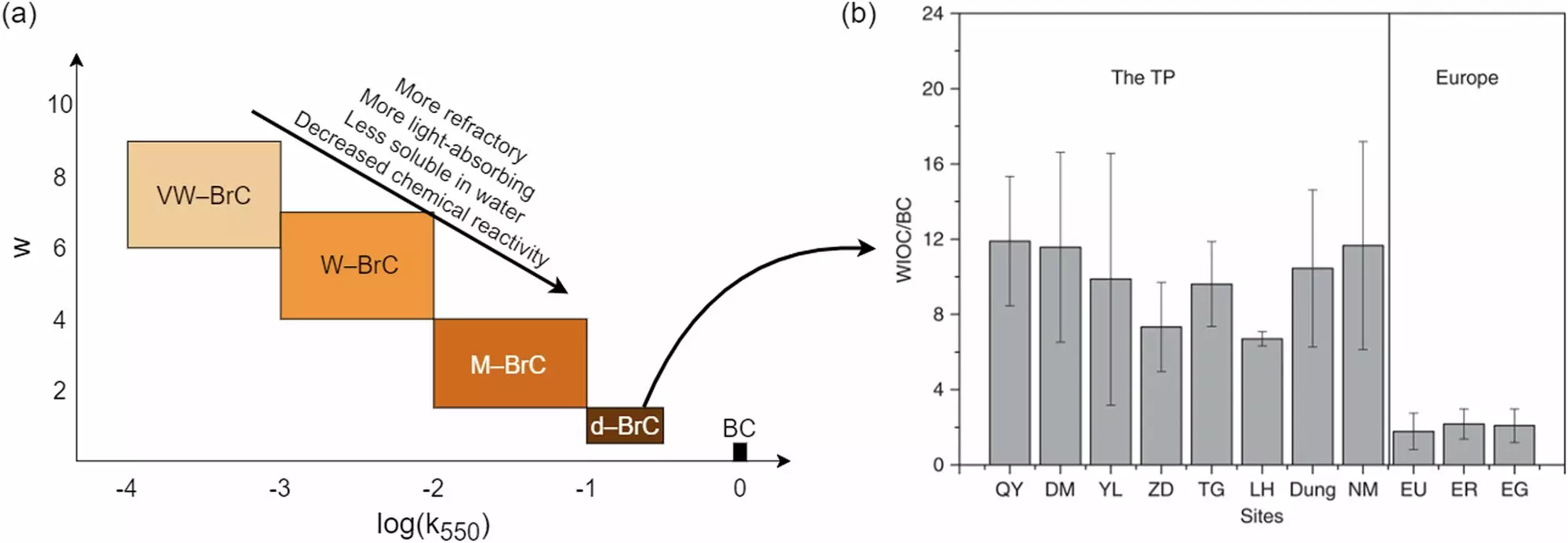Wildfires are known to leave behind particles that can have a significant impact on the climate. These particles, also known as aerosols, can enhance the absorption of sunlight and warm the atmosphere. Recent research conducted by experts at Washington University in St. Louis sheds light on the role of dark-brown carbon (d-BrC) – a type of light-absorbing, water-insoluble organic carbon – in snow melting processes. The study reveals that d-BrC plays a much larger role as a snow-warming agent compared to previously identified culprits like black carbon.
Traditionally, black carbon has been considered the main contributor to snow melting caused by wildfire smoke deposition. However, the research conducted at Washington University suggests that d-BrC is 1.6 times more potent in warming snow-covered regions. The deposition of water-insoluble organic carbon on snow, particularly in regions like the Tibetan Plateau, has been previously observed. Despite this, the snow-melting potential of these particles has not been thoroughly investigated until now.
Researchers liken d-BrC to an “evil cousin” of black carbon, highlighting its significant impact on snow reflectance and warming. When these dark-brown carbon particles are deposited on snow caps, they reduce the surface reflectance, leading to increased absorption of sunlight and subsequent warming of the surrounding air. Unlike black carbon, d-BrC particles cannot be easily washed away or bleached, making them a persistent factor in snow melting processes.
The research findings have important implications for climate models and policymaking. By underestimating the snow melt caused by wildfire smoke deposition, previous studies may have inaccurately represented the impact of these events on the environment. Understanding the role of d-BrC in snow melting will enable more accurate climate predictions and better-informed policy decisions as wildfires become more prevalent.
To further investigate the effects of d-BrC on snow melting, researchers at Washington University have planned experimental studies using a snow globe setup in the lab. By atomizing water droplets and depositing aerosols on the snow, they aim to simulate real-world conditions and observe the behavior of these particles. This innovative approach will provide valuable insights into the interactions between wildfire smoke particles and snow cover without the need for field studies.
The research conducted at Washington University in St. Louis highlights the significant impact of dark-brown carbon particles from wildfires on snow melting processes. By shedding light on the role of d-BrC and its effects on snow reflectance, this study contributes to a better understanding of climate change dynamics and the need for effective mitigation strategies.


Leave a Reply